Easter reflections
We asked 10 people for their most meaningful Easter memory, or an image that best captures the essence of Easter, or what Easter makes them wonder.
We asked 10 people for their most meaningful Easter memory, or an image that best captures the essence of Easter, or what Easter makes them wonder.
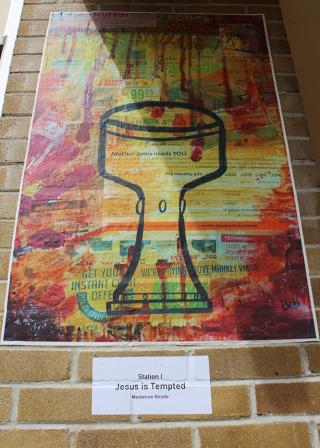
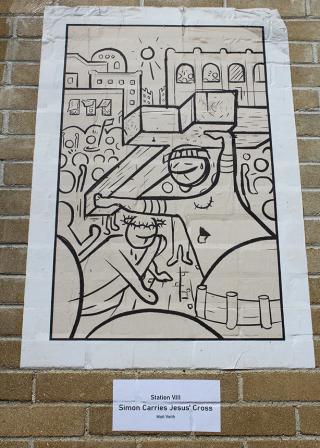
During Holy Week, bright pops of colour appeared in a downtown alley amid the brown slush and litter of a Winnipeg spring.
I have a vivid childhood memory of hearing my mother read C.S. Lewis’s book, The Lion, the Witch and the Wardrobe. Chapters 14 and 15 tell the story of the battle between life and death: the horrific killing of the hero, Aslan, the grieving of his faithful friends, and his triumphant emerging into life once again.

Sisters Marlene Froese, left, and Hedie Harder, right, with a few of the 401 paska buns they baked to share with Nutana Park Mennonite Church. (Photo by Denelda Fast)
Nutana Park Mennonite Church in Saskatoon came up with a creative way to celebrate Easter and care for their congregation at the same time.
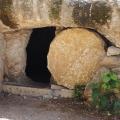
“Mark gives us a different take on Jesus’ resurrection than we typically think of…” (Image by dozemode/Pixabay)
In our Holy Week journey toward the cross, we already know that the story ends with the good news of resurrection. But Mark gives us a different take on Jesus’ resurrection than we typically think of, and it’s a take worth reflecting on this Easter.
Here are the (most likely*) final words of Mark’s Gospel: “So [Mary, Mary, and Salome] went out and fled from the tomb, for terror and amazement had seized them; and they said nothing to anyone, for they were afraid.”
Fear, even terror? How is this good news?
Although our world is facing the challenge of COVID-19, I am so glad for the parts of life that remain unchanged. Every day brings press conferences with appalling numbers of the losses we endure, talk of restrictions and life that seems like it’s in a state of flux. Yet, peanut butter, Netflix, and, of course, the Revised Common Lectionary remain.

Heather Driedger, shown here with her own paska, held a virtual paska bake-off via Instagram this Easter. (Photo courtesy of Heather Driedger)
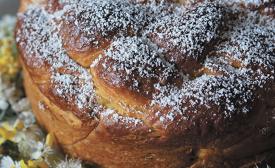
This braided paska by Holly Brown of Germany tied for first place in Heather Driedger’s paska bake-off. (Photo courtesy of Heather Driedger)
She couldn’t gather family and friends around her table to eat paska this Easter, so Heather Driedger decided to hold a virtual paska bake-off instead.
In the past few weeks, it’s likely you’ve seen a video of people singing together virtually.
When the members of Winnipeg’s Prairie Voices choir had to cancel their 20th anniversary concert as a result of the COVID-19 pandemic, they channeled their disappointment into this video.
I could not have predicted the responses I got when I asked 15 Mennonite Church Canada pastors—all women—how they would explain the meaning of the cross and resurrection to a 12-year-old.
One morning in the second full week of Lent, I woke up to the first sign of Easter.
It’s a question I’ve heard many times over the years: “Do Christians really need to believe in Jesus’ resurrection?”
It is, after all, a pretty difficult idea to accept. And this is not just a modern difficulty. It’s been obvious to humans for a very long time that dead people stay dead.
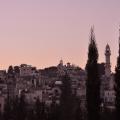
Sunset in Bethlehem (Photo by Brandi Friesen Thorpe)
Holy Saturday,
The place for bleakness, twisted mourning, black.
I like this day, today,
How it holds permission to wallow and be in the dark,
To wander in the twisted depths.
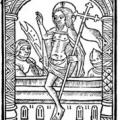
The resurrection as a peaceful response to violence. (16th-century engraving by Jean Tisserand, from Wikimedia Commons)
Here we are, a couple of weeks post-Easter, and I’m still thinking about the resurrection. Have you ever considered the resurrection as symbolic of peace and nonviolence? And don’t worry, I’m going somewhere with this—it’s not just another instance of the Mennonite tendency to reduce everything to either Jesus or peace!
Now that we’ve entered once again into the sombreness of Holy Week, I’d like to share a poem of mine which expresses some of my reflections on the cross, which I’ve shared on this blog before.
This Easter is going to be different.
I probably sound hypocritical stating how uncomfortable I am talking about death in one post and then writing about that very topic in another post. I didn’t plan on talking about it anymore, but lately, it’s all we’ve been talking about.
On Sunday, Boo came out of her Sunday school class proudly holding a colorful beaded cross. “It’s a cross,” she stated proudly. And then her whole face and demeanour changed. “Jesus died here. I am so sad. Jesus died. Why did Jesus have to die?”
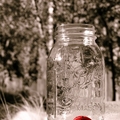
At this moment, I am sitting in the warmth of a sunbeam, sipping a cup of tea, and enjoying a quiet afternoon while both my girls nap. What a glorious moment. Or, at least it would be, except for the dead ladybug sitting in a jar on the windowsill next to me.
It’s springtime. Dead bugs are a common presence around here. But this bug is different. For starters, she has a name. Odette. And she is loved dearly by my eldest daughter, Boo.
Easter this year felt special. I guess it does every year, but I thought a lot this Lent and Easter season about the meaning of all of this in a way that I haven't before.
In our reflection time on Sunday, I wrote:
Thinking about trauma and how it impacts our lives, I begin to see it everywhere. Is everything a story of something whole becoming broken, and seeking to become whole again? Is this our human story?